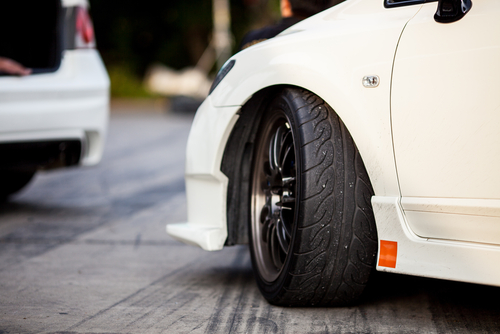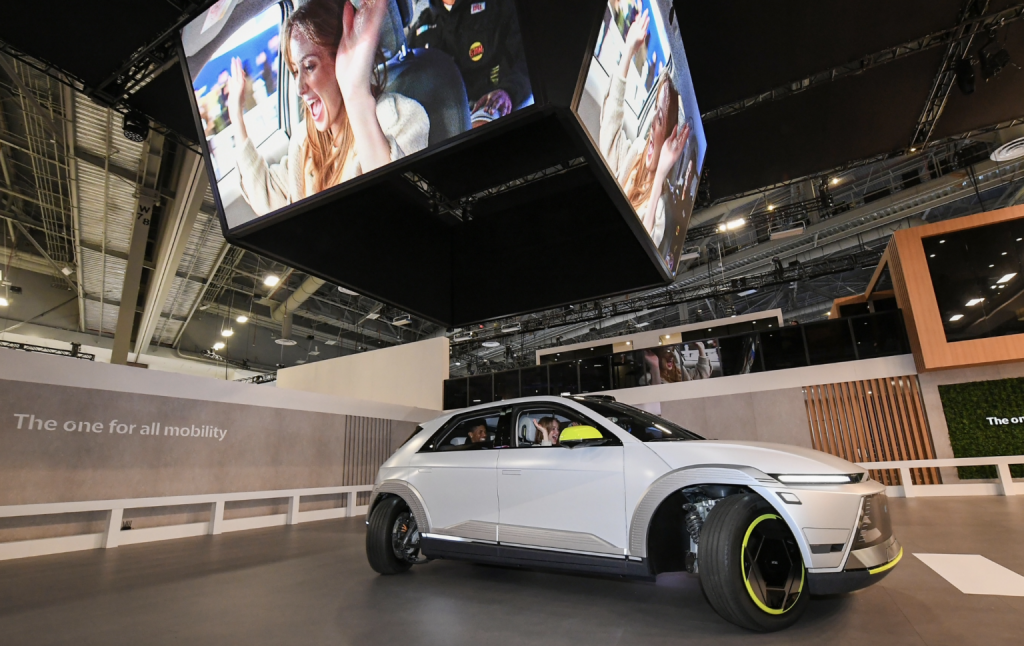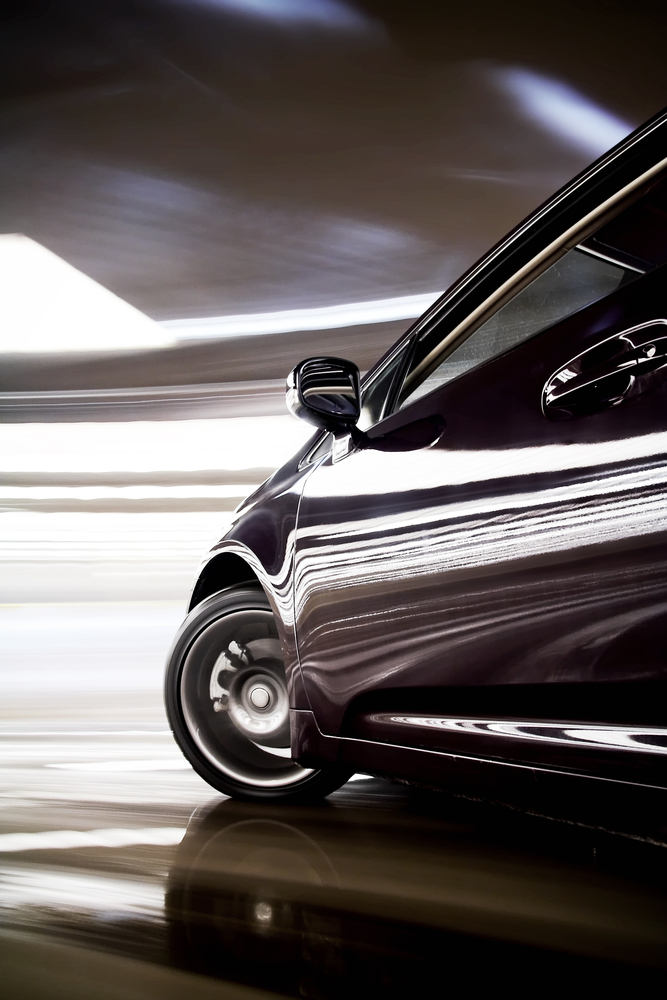The car that moves like a crab

When you teach someone to drive, the usual approach is to explain that a car only has two directions of travel: forward and reverse. Until now, these two directions limited the movements that one could make with a vehicle. Hence, parallel parking is one of the main sources of concern for all new drivers and an important part of veteran driving. Now, that could be about to change.
The first test is MOBION, the vehicle that Hyundai Mobis—the arm of the Korean Hyundai firm, devoted to parts and spare parts—unveiled at the CES technology fair in January in Las Vegas. A vehicle that in the demonstration turned on itself, moved diagonally and pivoted on its front wheels.

Like a crab
Until now, the main obstacle that prevented a car from going in any direction was that the wheels were joined in two pairs through the axles. In this mechanism, the front axle controls the direction, pivoting when we turn the steering wheel to one side or the other and modifying the position of the wheels in the same direction. Of course, that limits the range of motion; the rear wheels do not have the ability to pivot, and the front wheels cannot turn independently.
The solution is to articulate all the wheels independently. A system that the manufacturer has called E-corner and in which each wheel has its own engine, its own suspension and its own brakes. Thus, each of the tires is mechanically independent. And the car can perform maneuvers that until now were only possible with a good dose of fantasy. Having the car move sideways to parallel park without difficulty? At the push of a button. Turning the car on itself, eliminating all the difficulty of getting the car out of a tight space? No problem. Moving diagonally down a narrow street to avoid a double-parked car? Easy.
.
The result is a car that moves like a crab. Its wheels are capable of turning up to nearly 45º, enabling movements for the vehicle that until now were impossible. Like the lateral displacement that characterizes these decapods and that the brand has described, of course, as “crab mode.”
The possibilities opened up by a change in the way vehicles like this move are countless. For starters, it could allow the search for more efficient parking systems. It could also increase the maneuverability of vehicles, and with it their possibilities of use in environments that until now were not very favorable, such as streets with sharp turns or narrow rural roads.
No gasoline cars and no gold medals

Of course, the system has limitations. The first is that it is a system totally incompatible with vehicles with gasoline engines, since these use the axle to transform the engine’s energy into wheel movement. Thus, the E-corner system can only be installed in electric cars.
In addition, the system, at the moment, greatly limits MOBION’s maximum speed. According to Hyundai, the maximum speed reached during tests with vehicles that used the system was 80 kilometers per hour. A distance that the company hopes to be able to increase, up to 110 km/h. But that will have to wait. For now, given the limitations imposed by a system in which each wheel has its own electric motor, no car that has it installed will be in a position to excel in a speed race.
At the moment it is a prototype. Hyundai says that it is not even planning to use the design for the production of its own models. But the South Korean multinational has said that by 2026 it would like to be licensing the technology so that other car manufacturers can use it. The design is completely modular and it is possible to adapt it to vehicles of different dimensions, which should mean that we will see cars circulating laterally on the streets in a matter of a few years.